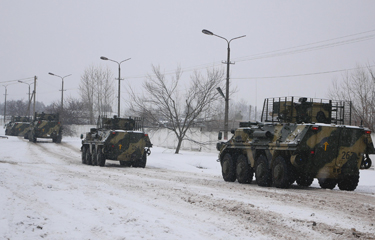Russia’s place in the global seafood trading market – and its strategy of growing its exports through value-added processing – have been jeopardized by the country’s invasion of Ukraine, which has resulted in blowback that is already creating large-scale disruption to Russia’s seafood industry.
The world’s energy and food markets are in turmoil, with a wave of sanctions being levied by the European Union, United States, and other countries against Russia, a major producer of natural gas and wheat. And supply chain bottlenecks created by the COVID-19 pandemic are expected to worsen as a result of the conflict. Glenn Koepke, general manager at supply chain consultancy FourKites, said ocean-shipping rates could grow to USD 30,000 (EUR 26,900) per container, and airfreight costs could rise even higher.
“We are going to see rates skyrocket for ocean and air,” Koepke told The New York Times.
The expulsion of some Russian banks from the Society for Worldwide Interbank Financial Telecommunication (SWIFT) system will further complicate Russia’s economic outlook, as it will make it much harder for international companies to conduct business there.
"If Russia is disconnected from SWIFT, then we will not receive [foreign] currency, but buyers, European countries in the first place, will not receive our goods – oil, gas, metals and other important components," Nikolai Zhuravlev, vice speaker of Russia's upper house of parliament, told TASS.
Russia’s seafood industry, which remains heavily reliant on exports despite a recent effort to popularize fish caught domestically, will face an uncertain future if their access to international markets is curtailed. Even prior to the Ukraine invasion, Russian seafood exported volumes fell by 11.55 percent in 2021 year-over-year, to 1.645 million metric tons (MT).
Despite the shrinking volume Russia’s seafood exports rose in value by 26 percent in 2021 to USD 5.85 billion (EUR 5.02 billion) due to a shift to producing and selling more deeply-processed products like fillet and mince, but many of its fastest-growing markets are now imposing sanctions against Russian products.
In 2021, Russian fisheries exported products to 67 countries, versus 60 a year previously. South Korea took over as Russia’s largest seafood-export market as China limited its imports due to concerns over COVID-19. South Korea accounted for 37 percent of Russian seafood sales abroad in volume and 50 percent in value terms in 2021, while China dropped to a 21 percent share of Russian seafood exports by volume and 18 percent by value. It is likely South Korean ports served as transition hubs for Russia seafood destined for China, but this trade route may disappear soon. On 28 February, South Korea announced an effort to limit its trade with Russia as a result of its invasion of Ukraine.
The Netherlands took in the third-most amount of Russian seafood in 2021 by volume, followed by Japan, Belarus, Ukraine, and Nigeria. Some of the fastest-growing markets for Russian seafood were European markets, such as France, which increased purchases of Russian seafood by 112 percent by volume; Norway, which took in 100 percent more Russian seafood in 2021 than the year prior; Italy, which bought 152 percent more Russian seafood in 2021; and Poland, which increased its Russian seafood purchases by 113 percent. Most of these markets are likely to enact severe trading limitations against Russia as a result of its aggression in Ukraine.
Russian seafood companies continued to push for more value-added processing, with a focus on pollock, Russia’s Pollock Catchers Association (PCA) said in a special report published on its website. In January 2022, the national output of pollock filler surged 44 percent year-over-year, while the production of frozen pollock decreased. Mince production rose 2.4 times over 2021 and fishmeal production rose 55 percent, primarily due to improved processing capacity and capability in the Russian fleet, with 32 Russian fishing vessels now equipped with filleting lines.
Russia’s growth in the value of its pollock exports primarily came from exports of frozen filler and mince, which increased 45 percent to reach 145,000 MT, bringing in USD 613 million (EUR 551.7 million). Its pollock fillet sales accounted for 76,000 MT, up 50 percent over 2020, and were worth USD 247 million (EUR 222.3 million), up 58 percent. Cod-fillet sales rose 33 percent to 34,200 MT, worth USD 239.5 million (EUR 215.5 million), up 36 percent.
Crab was the leading segment of Russian seafood exports measured in value terms Even with volumes flat at 75,000 MT, Russian crab exports earned USD 2.5 billion (EUR 2.3 billion) in value, up USD 1 billion (EUR 900 million) from 2020. But three of the primary markets for Russian crab – the United States, the European Union, and South Korea – are considering further sanctioning of Russian goods, with some U.S. politicians explicitly calling for a ban on Russian seafood, and China scaling back its purchases of Russian seafood due to the COVID-19 pandemic.
Photo courtesy of Seneline/Shutterstock







